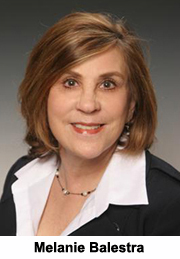Billing Criteria Can Impact Medicare Reimbursement Rate for Providers
 By Melanie Balestra, NP, Esq.
By Melanie Balestra, NP, Esq.
“Incident to” criteria is primarily associated with Medicare reimbursement. Medicare will only reimburse an NP at 85 percent if Medicare criteria for incident to are not met. The criteria for incident to billing is as follows:
- The services are rendered under the direct supervision of the physician. Therefore, the physician must be in the facility at the time of the incident to billing. The physician does not have to be present in the same room.
- The services are furnished as an integral part of the NP’s professional services in the course of the diagnosis or treatment of an injury or illness.
- The services are commonly rendered without charge or included in the physician’s bill.
- The services are of a type commonly furnished in a physician’s office.
- The physician must initiate treatment and see the patient at a frequency that reflects his/her active involvement in the patient’s case. This includes both new patients and established patients being seen for new problems. The claims are then billed under the physician’s NPI. Medicare does not require a certain number of visits by the physician. It is left up to the physician’s discretion.
- The NP may initiate treatment and see the patient at a frequency that reflects his/her active involvement in the case.
Terminology used
CMS has defined that “immediately available” means “without delay” to mean that the supervising physician is in the office suite or patient’s home, readily available and without delay, to assist and take over the care as necessary.
Direct supervision does not mean that the physician has to be physically present in the same room but readily available if the NP needs him/her.
Initial service can be confusing. Some clinicians interpret this to mean only the first visit of the patient must be performed by the physician. Others interpret this to mean that when there is a new problem the NP must either bill under his or her own number or refer the patient back to the physician. CMS has not defined initial service or subsequent frequency of services.
If the NP is in a group practice, any of the physicians may be present. However, the physicians should all sign the Protocols and Standardized Procedures.
Billing
When billing incident to services, the claim should be submitted under the physician’s NPI number. The NP is not listed on the claim form. According to the Medicare Claims Processing Manual, Chapter 26, Section 10.4, based on who was the supervising physician on the date of service being billed, there are two ways of filling out the claim form: The “ordering physician” is the physician who initially saw the patient and established the plan of care, which the NP followed during today’s subsequent visit being billed. The “supervising physician” is the physician who was on-site and available to the NP during the visit being billed. Since the supervising physician can be different than the ordering physician, he/she needs to be identified on the form.
When an NP sees a patient for a new problem, he/she will need to bill under his/her own PIN. If the physician sees the patient for a new problem, the bill can be under the physician’s NPI.
Appropriate Use
The physician evaluates a patient and diagnoses gout. The physician initiates the treatment. He employs an NP who conducts follow-up visits with the patient, monitoring and treating him over months and years. The physician sees the patient every fifth visit under a policy adopted by the practice. The NP’s visits may be billed under the physician’s NPI and the practice will receive 100 percent of the physician’s rate for services provided by the NP as long as a physician was in the office.
Inappropriate Use
An NP is employed by a physician to work in a satellite office. The physician is never present. The NP cannot bill incident to.